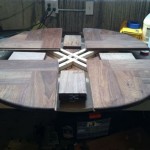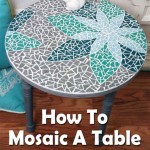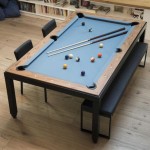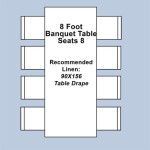How Much Does a Billiard Table Cost? A Comprehensive Guide
The cost of a billiard table can vary significantly, influenced by a multitude of factors. From the quality of materials to the craftsmanship involved, understanding these variables is crucial for making an informed purchase. This article aims to provide a comprehensive overview of the different elements that contribute to the price of a billiard table, helping potential buyers navigate the market and find an option that suits their budget and playing preferences.
Generally, the price range for billiard tables can span from a few hundred dollars to tens of thousands. Entry-level tables, often targeted towards recreational use in homes, can be found in the lower end of the spectrum. Higher-end tables, designed for professional players or those seeking premium quality and aesthetics, will inevitably command a much higher price. The specific price also depends on the type of billiard table. Pool tables, snooker tables, and carom tables, while all falling under the umbrella of billiard tables, have distinct features and construction requirements that contribute to differing costs.
Before diving into specific price points, it's essential to understand the key components of a billiard table and how they impact its overall quality and cost. These components include the slate, the frame, the cloth, the cushions (or rails), and the legs. The quality of each of these elements plays a significant role in the table's playability, durability, and aesthetic appeal.
The Impact of Slate Quality on Billiard Table Cost
The slate bed is arguably the most critical component of a billiard table. It provides the flat, level playing surface essential for accurate ball roll. Slate quality directly affects the table's playability and longevity. Cheaper tables often utilize thinner slate, typically ranging from ¾ inch to 1 inch. These thinner slates are more prone to warping and developing dead spots, resulting in inconsistent ball behavior. Higher-quality tables typically employ thicker slate, generally 1 inch to 1 ¼ inches. This increased thickness provides superior stability, resistance to warping, and a more consistent playing surface. The thicker slate contributes to a higher price point but offers a significantly improved playing experience and extended lifespan.
Furthermore, the number of slate pieces also influences the price. Some cheaper tables use a single-piece slate, which while seemingly simpler, can be more difficult to transport and install without damage. High-end tables usually feature a three-piece slate. The seams between the slate pieces are meticulously filled and leveled to create a seamless playing surface. This construction method offers several advantages. It makes the table easier to transport and install, and it allows for easier leveling and adjustments over time. The three-piece slate design is more expensive to manufacture and install, contributing to the higher cost of these tables.
The precision with which the slate is ground and leveled also affects the price. Highly precise grinding ensures a perfectly flat surface, eliminating any imperfections that could affect ball roll. This level of precision requires specialized equipment and skilled labor, adding to the overall cost. In contrast, cheaper tables may have less precise slate surfaces, leading to inconsistencies in ball behavior. The type of slate also matters. Certain types of slate, such as Italian slate, are renowned for their density and smoothness, making them highly desirable for high-end tables. These premium slates are naturally more expensive than more common varieties.
The Role of Framing and Wood Quality in Billiard Table Pricing
The frame of a billiard table provides structural support for the slate bed. The quality of the frame significantly impacts the table's stability and durability. Cheaper tables often use frames made from particleboard or lower-grade lumber. These materials can be prone to warping, cracking, and sagging over time, particularly under the weight of the slate. This can lead to uneven playing surfaces and ultimately shorten the table's lifespan. Higher-quality tables utilize solid hardwood frames, such as maple, oak, or mahogany. These hardwoods offer superior strength, stability, and resistance to warping. The robust frame provides a solid foundation for the slate, ensuring a consistent and level playing surface for years to come.
The construction of the frame also plays a role in the table's cost. Dovetail joints, mortise-and-tenon joints, and other intricate woodworking techniques are often employed in high-end tables to enhance the frame's strength and stability. These techniques require skilled craftsmanship and add to the overall manufacturing cost. Simpler tables may use cheaper construction methods, such as screws and glue, which are less durable and prone to failure over time.
The type of wood used for the exterior of the table also influences the price. High-end tables often feature exotic hardwoods or intricate veneers, adding to their aesthetic appeal. The finish applied to the wood also contributes to the cost. Multiple coats of lacquer, hand-rubbed finishes, and other high-end finishing techniques require more time and labor, resulting in a higher price point. The choice of wood and finish is largely aesthetic, but it significantly impacts the table's overall appearance and perceived value.
Cloth and Cushion Quality: Impact on Play and Cost
The cloth covering the slate bed plays a crucial role in ball speed and accuracy. The quality of the cloth is determined by the type of fiber used (typically wool or nylon blends), the weave density, and the nap (the direction of the fibers). Cheaper tables often use low-quality cloth with a loose weave and a pronounced nap. This can cause the balls to slow down quickly and deviate from their intended path. Higher-quality tables use tightly woven cloth with a smooth, consistent surface. This allows the balls to roll smoothly and accurately, providing a more enjoyable playing experience. Simonis cloth, for example, is a popular choice for tournament-quality tables due to its durability and consistent playing characteristics. Top-tier cloths command a higher price due to the superior materials and manufacturing processes involved.
The cushions, also known as rails, are the rubber bumpers that surround the playing surface. They are responsible for rebounding the balls accurately. The quality of the rubber used in the cushions is critical. Cheaper tables often use low-quality rubber that becomes hard and unresponsive over time. This can lead to inaccurate rebounds and a less enjoyable playing experience. Higher-quality tables use premium rubber compounds that are designed to maintain their resilience and responsiveness over many years of use. These cushions provide consistent and accurate ball rebound. The type of rubber and the manufacturing process contribute to the higher cost of these tables. The "K66" profile of the cushion is a popular choice for pool tables, offering consistent rebound angles. Other profiles are used for different types of billiard tables, such as snooker tables.
Replacing the cloth and cushions is an expense to consider after the initial purchase. High-quality cloth and cushions are more durable and last longer, delaying the need for replacement, but the quality of the original materials will impact how long they will last. The cost of replacement cloth and cushions, as well as the labor to install them, should be factored into the long-term cost of ownership.
Beyond these key components, other factors can influence the final price of a billiard table. These include the brand reputation, the complexity of the design, any custom features, and the cost of delivery and installation. Tables from well-known and respected brands often command a premium due to their reputation for quality and reliability. Tables with intricate designs and custom features, such as inlaid mother-of-pearl or custom wood carvings, will naturally be more expensive due to the added labor and materials involved. Delivery and professional installation can also add significantly to the overall cost, particularly for heavier tables with multi-piece slate beds.
Ultimately, the cost of a billiard table is a reflection of the quality of its materials, the craftsmanship involved in its construction, and the features it offers. Potential buyers should carefully consider their budget and playing preferences when choosing a table. Investing in a high-quality table can provide years of enjoyment and a superior playing experience. Conversely, opting for a cheaper table may lead to disappointment and the need for costly repairs or replacements in the future.

How Much Does A Pool Table Cost

Hathaway Fairmont 6 Ft Portable Pool Table Bg2574 The Home Depot

How Much Is A Pool Table Billiards Direct

Reno Pool Table Easi8

How Much Does A Pool Table Cost E Schmidt Billiards American Made Tables

How Much Does A Pool Table Cost Game Room
How Much Does A Pool Table Cost Quora

How Much Does A Pool Table Cost

Hathaway Augusta 8 Ft Non Slate Pool Table In Walnut Finish Bg2670 The Home Depot

How Much Is A Pool Table Guide








